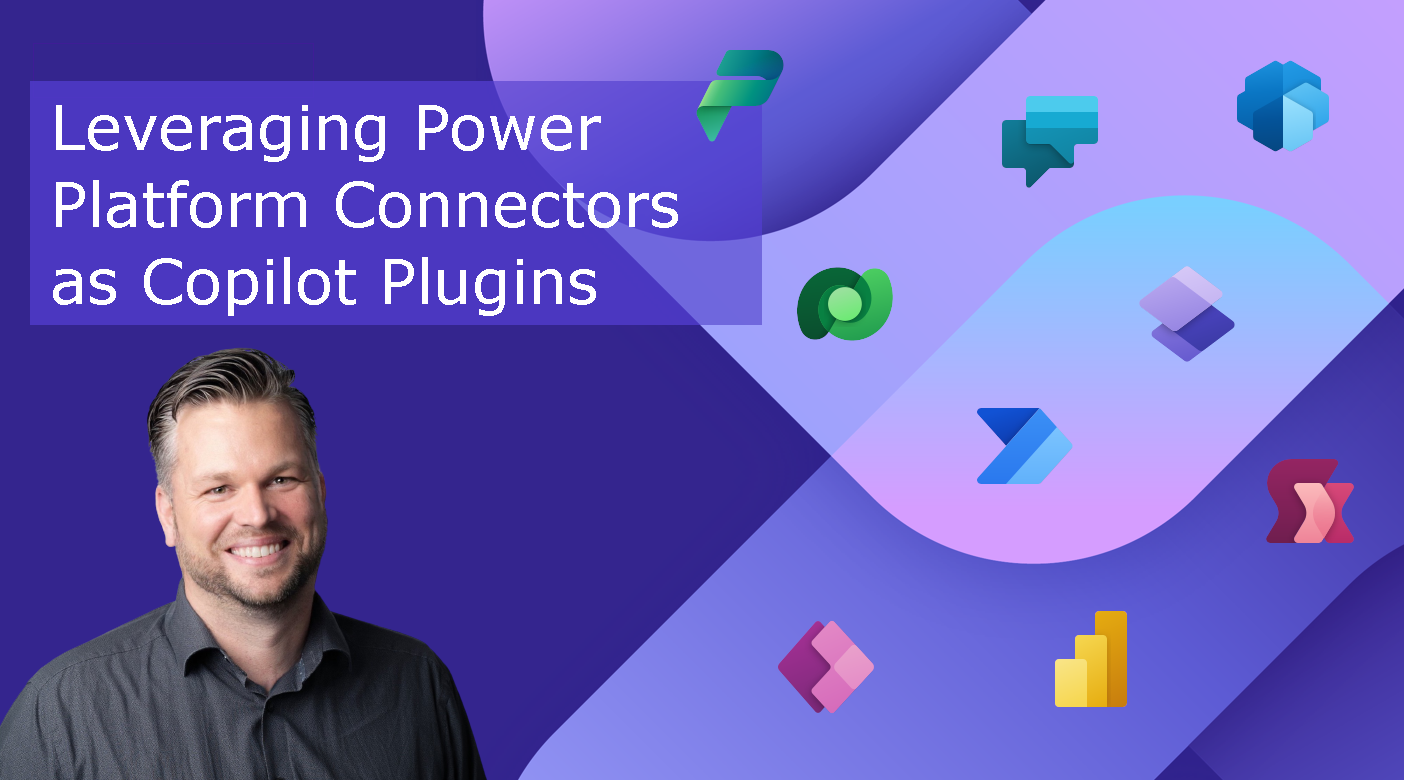The realm of business applications is continuously evolving, with Microsoft leading the charge through its ever-expanding suite of productivity tools. One of the latest innovations, Microsoft 365 Copilot, is set to revolutionize how we interact with applications and data across various platforms. This article delves into the potential of Power Platform connectors as Copilot plugins, and how developers and organizations can gear up for this exciting transformation.
A Glimpse into Microsoft 365 Copilot
Before diving into the specifics of Power Platform connectors and their role as Copilot plugins, let's first understand the essence of Microsoft 365 Copilot. Positioned as a next-generation AI assistant, Copilot integrates with Microsoft 365 applications like Word, Excel, PowerPoint, Outlook, and Teams, enabling users to leverage AI capabilities to solve complex work-related problems.
Microsoft 365 Copilot uses plugins to interact directly with third-party data, apps, and services. This interaction enhances the Copilot's functionalities, allowing it to retrieve real-time information and perform complex computations. In essence, these plugins act as the bridge between Copilot and a world of external resources, significantly broadening its capabilities.
The Role of Power Platform Connectors
Power Platform connectors are pivotal in connecting different systems or applications and facilitating data exchange. They're essentially the building blocks for low-code development, helping developers create richer applications and workflows. Currently, Microsoft offers over 1000 connectors for Power Automate, Power Apps, and Azure Logic Apps.
In the context of Microsoft 365 Copilot, these connectors play an integral role. They serve as plugins that extend the capabilities of Copilot, allowing it to interact with the APIs of other software and services. This interaction enables Copilot to retrieve real-time information, incorporate company and business data, and conduct new types of computations.
The Power of Custom Connectors
While Azure Logic Apps, Microsoft Power Automate, and Microsoft Power Apps offer a plethora of prebuilt connectors, there are times when developers need to communicate with services not available as prebuilt connectors. This is where custom connectors come into play.
Custom connectors are wrappers around REST or SOAP APIs that allow these platforms to communicate with the API. With these custom connectors, developers can create and share a connector with its own triggers and actions. These connectors could be public (visible on the internet) or private (visible only to a specific network).
Custom Connectors as Copilot Plugins
The exciting development is that developers can now use Power Platform connectors to extend Microsoft 365 Copilot with plugins. These plugins can be seen as a gateway for Copilot to access a vast range of third-party data, apps, and services.
The connectors can be used to build plugins that work with both Microsoft 365 Copilot and ChatGPT. This interoperability opens up a world of possibilities for developers, allowing them to create plugins that not only enhance the functionality of their applications but also broaden their reach to millions of users.
One of the notable examples in this realm is the Desk365 Power Platform connector plugin, which can be easily enabled from within Microsoft 365 Copilot. Using natural language prompts, users can perform tasks like retrieving tickets assigned to them or fetching Desk365 tickets with urgent priority.
Harnessing the Power of Custom Connectors
Developers can unlock Copilot capabilities via Power Platform connectors in a few easy steps. The process involves building a Copilot-enabled Power Platform connector, enabling it as a plugin, and leveraging these plugins to perform complex and repetitive tasks using only natural language. The key is to ensure that Microsoft 365 data is well-configured and categorized, ensuring optimal search results and enhancing the effectiveness of Copilot.
Sharing and Certifying Custom Connectors
Developers have the option to share their custom connectors with users in their organization, just like they share resources in Logic Apps, Power Automate, or Power Apps. Additionally, for developers interested in sharing their connectors with all users of these platforms, Microsoft offers a certification process. This certification involves a thorough review of the connector for technical and content compliance and functionality validation.
Preparing for Copilot: A Guide for Developers and Organizations
The advent of Microsoft 365 Copilot presents a wealth of opportunities, but to fully leverage these opportunities, organizations and developers must prepare. For organizations, this means ensuring their Microsoft 365 data is well-configured and categorized to optimize search results. For developers, building Teams Message Extensions, Search Connectors, and Power Platform Connectors today will set them up for success when Copilot becomes available on November 1st.
Conclusion
Microsoft 365 Copilot, powered by plugins developed using Power Platform connectors, is set to redefine how we interact with business applications. As developers and organizations, the time is ripe to start preparing for this future. By creating custom connectors or publishing connectors for the services you own, you can ensure that they can be enabled by Copilot too, unlocking a realm of possibilities in the world of business applications.
In the next article we will dive into creating one together!


Comments